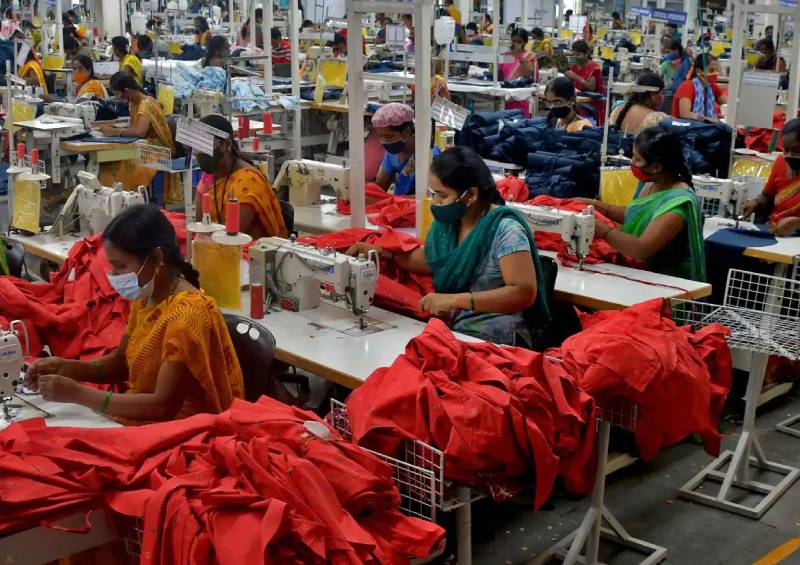Domestic T&A Sector Set To Reverse Trend Amidst Gradual Demand Revival

It seems the worst is over for the domestic textile and apparel (T&A) sector, if one goes by the exports data of the first two months of the current calendar year of 2024. Even as the overall exports declined by 1 per cent to $34.4 billion and the apparel exports from the country dipped by 10.25 per cent to $14.4 billion during the entire 12 months of the fiscal year FY24 as compared to FY23, the garment exports that account for 42 per cent of the combined T&A exports, have shown a positive trend during February 2024 and March 2024. While in February this year, the garment exports grew 4.88 per cent (Y-0-Y) to around $1.5 billion, in March the exports improved by 1.70 per cent to around $1.4 billion.
Meanwhile, the imports of apparel into the US, the largest importer from India, have also witnessed a surge recently. In Jan-Feb 2024, the US saw a 12.49 per cent rise in textile and apparel imports in volume terms. The apparel imports grew by 1.72 per cent, while textile imports into the US surged by 17.44 per cent.
As per the US Department of Commerce’s Census Bureau, the overall retail sales (including apparel and other merchandise) in the US in Q1 2024 have seen an impressive growth. Retail sales in March soared 5.3 per cent (Y-O-Y), beating inflation and signaling consumer strength. E-commerce growth at 5.6 per cent was even more robust. In February, which had an extra day this year, retail sales increased 6.9 per cent, as e-commerce surged 10.6 per cent. Similarly, the US retail sales in January 2024 rose 3.8 per cent, while e-commerce during the month increased 8.2 per cent.
Analysts say that retail sales in the US are not increasing just because prices are going up. In fact, Americans are actually buying more stuff. This is one of the strongest retail sales reports seen in the past couple of years.
With over 98 per cent of clothing sold in the US retail market being imported today, there exists a strong correlation between the US apparel retail sales and the volume of apparel imports. Between 2015 and 2022, the US clothing sales to clothing import ratio remained consistently around 3.0-3.2 (seasonally adjusted). In other words, the value of retail sales was approximately three times the value of apparel imports. However, in 2023, this ratio increased to 4.0-4.5.
“The US retail market is showing a distinct sign of improvement in the initial three months of the current calendar year. This is going to have a positive bearing on their imports and on our exports going forward. The market seems to have discounted the existing headwinds arising out of geopolitical uncertainties. Now we can definitely say that we have bottomed out and from here on we can only move up,” says Rahul Mehta, Chief Mentor, Clothing Manufacturers Association of India.
Expressing his optimism, Mithileshwar Thakur, Secretary-General of the Apparel Exports Promotion Council (AEPC) states, ”The first two months of 2024 have seen a recovery despite global headwinds. The industry is bullish that the value of (apparel) exports may increase considerably in the current financial year because we are hopeful of FTAs being signed between India, the UK and the EU. The PLI Scheme for man-made fibre apparel and fabrics and the seven PM MITRA Parks will boost our production capabilities in the textile sector.
“We have already entered into a positive territory and this has happened after a prolonged sluggishness. Trade has now become used to the existing geopolitical headwinds and all geared up to move on from here. The US retailers are sitting on a much lower inventory and looking to replenish their stocks. Moreover, `China plus One’ is showing up well as China’s share in our product categories has come down to 12 per cent from 20 per cent. All in all, India is playing out well. No doubt, FY2025 will be a much better year for the Indian textile industry,” avers KK Lalpuria, ED & CEO, Indo Count Industries.
Amidst these positive signs, a recent CRISIL Ratings report has said that the cotton yarn spinning industry is likely to witness a breather this fiscal after a year of turmoil last fiscal. As per the report, the operating margins of cotton yarn spinners are set to improve by 150-200 bps this fiscal after hitting decadal lows of 8.5-9 per cent last fiscal.
In FY2024, profitability was affected by lower cotton yarn spreads and inventory losses. This fiscal, however, holds a better promise. Stable cotton prices due to better availability of cotton during cotton season 2024 and improved cotton yarn spreads this fiscal will support improvement in margins. The revenue, too, will spin up 4-6 per cent this fiscal, driven by moderate growth in downstream demand amid stable yarn prices, after a 5-7 per cent decline last fiscal due to a sharp reduction in yarn prices.
Credit profiles, which were impacted by lower cash accrual last fiscal, will also improve with better operating performance and moderate capex on deleveraged balance sheets.
“Better availability of domestic cotton and continued downstream demand growth will drive recovery in cotton yarn spreads to Rs 90-92 per kg this fiscal from around Rs 87 per kg last fiscal. The improvement was already visible in the second half of FY2024 as higher cotton arrivals resulted in normalisation of cotton prices, thereby improving the margins of spinners. With cotton prices expected to stay benign and likely to remain below international prices, the operating margin is expected to recover 150-200 bps to 10.5-11 per cent this fiscal,” says Gautam Shahi, Director, CRISIL Ratings.
On the revenue front, the report says that while yarn prices are expected to remain flat, domestic sales volume, which forms 70-75 per cent of the industry pie, is set to grow 4-6 per cent in the current fiscal, backed by orders from key end-user segments like readymade garments and home textiles. However, the exports, which staged an exceptional recovery last fiscal with 80-85 per cent growth, are likely to grow only 3-4 per cent this fiscal, given sluggish global economic growth. With recovery in demand and operating performance, capacity utilisation level for the industry has reached 80-85 per cent and is expected to improve further this fiscal, says the report.
“However, capex for cotton yarn spinners will remain moderate over the near term as they recover from lows of last fiscal, thus obviating the need for significant debt additions on already deleveraged balance sheets,” says Pranav Shandil, Associate Director, CRISIL Ratings Ltd.
However, the CRISIL report states that any further slowdown in demand from the downstream segments such as readymade garments, and any adverse movement in domestic cotton prices vis-à-vis international prices in the near term, will bear watching.














